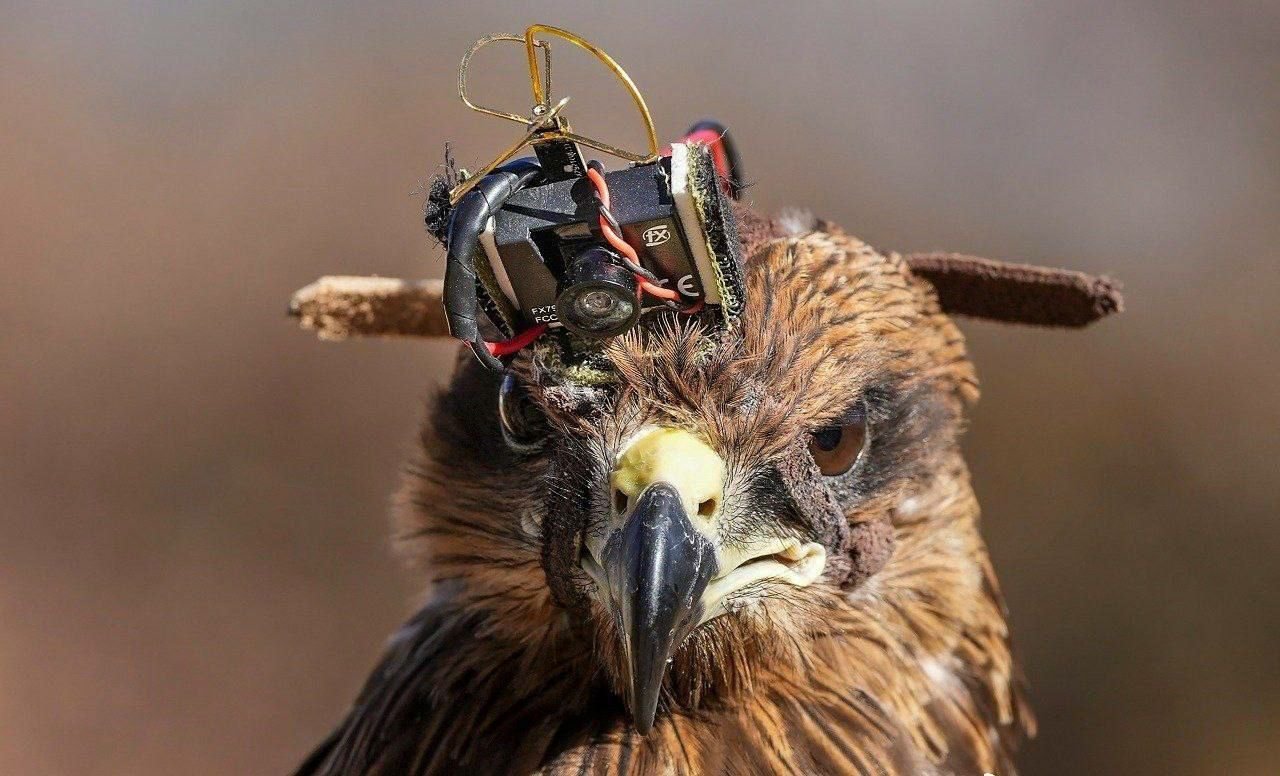News agency ANI and other media houses recently flaunted videos of the Indian Army’s drone hunting capability near the Line of Actual Control (LAC). While the Army exhibited its ‘technology’ against China, Beijing could be laughing in disbelief.
‘Arjun,’ the black Kite, hit the headlines when the news and social-media footage showed its ant-drone skills during the Indian and United States (US) Army’s exercise ‘Yudh Abhyas’ in Uttarakhand’s Auli.
What is interesting, somewhat embarrassing, is that the camera fastened on the Kite’s head by the Indian Army to detect and take down drones is apparently Chinese-made, according to information obtained by the EurAsian Times.
The Kite, which also has a GPS tracker tied to its body, works both parallelly and sometimes in consonance with a dog, who hears the drone and alerts his army handlers. The Indian soldiers then release the Kite, which locates the drone and takes it down with its sharp claws/talons.
Trained by the Meerut-based Remount Veterinary Corps Center, Arjun can also perform basic surveillance roles with its head-mounted camera, relaying images of the ground while flying over enemy territory.
#WATCH | A Kite trained by the Indian Army to prey on drones displayed in action at the ongoing Indo-US wargame Yudhabhyas in Auli, Uttarakhand pic.twitter.com/Bjha3gKaNS
— ANI (@ANI) November 29, 2022
The trained Black Kites will also be deployed at the International Border (IB) and Line of Control (LoC) with Pakistan, where there has been a slew of drone infiltrations and arms drops in Punjab and Rajasthan.
China, meanwhile, has criticized the Indo-US wargames at its border with India as interference from an extra-regional power and has urged India to independently approach its border disputes.
Chinese Cameras To Spy On Chinese Military
One of the close-up photos of the Kite on social media that showed the camera mounted reveals the logo of the manufacturer, reading as ‘FX.’
Hemraj Sharma, a EurAsian Times researcher, found that the company is a Chinese firm based in Shenzhen, often considered the technological capital of China due to the presence of many domestic hi-tech electronics, computing, and engineering firms.

The company is called FXT Technology, specializing in wireless backup camera systems since 2012 for a variety of transportation, industrial, agricultural and recreational purposes, according to its website. An internet search on the camera itself revealed its model as the FXT98T Micro FPV.
“The FX798T Micro FPV Camera and 5.8GHz 40CH 25mW VTX is extremely small and could be installed on almost anything. The unit is ultra-lightweight, so it is easy to place on any aircraft without affecting the center of gravity (COG),” the product information following an internet search revealed. VTX are antennas that beam footage from small cameras attached to drones to the controller screen on the ground.

“It’s easy to install and operate with one push button to change channels and bands. Just plug into a little 1S Lipoly battery or onto your 5V rail, and you are ready to go.
It has excellent video and low latency for such a small package. The combo also includes a splitter and a circular polarized 5.8G tuned antenna for the best video signal,” the information on one e-commerce website said.
Even US Military Is Dependent On China
Earlier in September, the Pentagon suspended the delivery of the F-35 stealth fighter after a magnet in the Honeywell-built turbomachine was found to have been made using cobalt and samarium alloy developed in China.
The Chinese alloy was later revealed to be present across all the 825 F-35s in 15 countries, including the United States. The turbomachine is an engine part that powers the starter/generator placed on the jet engine.
In October, the Pentagon waived the ban after assessing that the component did not transmit any information or harm the aircraft. However, the waiver was seen in China as American dependence on Chinese rare earth metals.
China has been known to leverage its abundance of rare earth, critical in manufacturing advanced electronics, to ensure foreign industrial investors stay in the country, comply with local laws, and part with niche technology with their local Chinese partners.

You Can’t Escape Chinese Goods
Chinese manufacturing dominance in electricals, electronics, and mechanical products – both finished goods and intermediate and vital components – has long been seen as a supply chain risk that Beijing can leverage.
Cheap labor, a vast trained pool of both Western and domestically educated engineers, scientists, and massive government subsidies since the mid-1970s motivated many US companies to shift their manufacturing to China.
This saved them costs, and profits swelled, pleasing shareholders, but led to a massive decline in American manufacturing, which former President Donald Trump bemoaned and rode to power in 2016.
The US-China trade war that began with Trump banning and levying tariffs on Chinese goods was a result of this very Chinese industrialization that was eroding America’s core competencies.
Chinese industry and labor were upskilled apart from becoming the manufacturing and assembly hub of even leading firms like Apple, amongst others. Chinese companies now manufacture cheap everyday electronics that are now used nearly all over the developing world.
- The author can be reached at satamp@gmail.com
- Follow EurAsian Times on Google News





